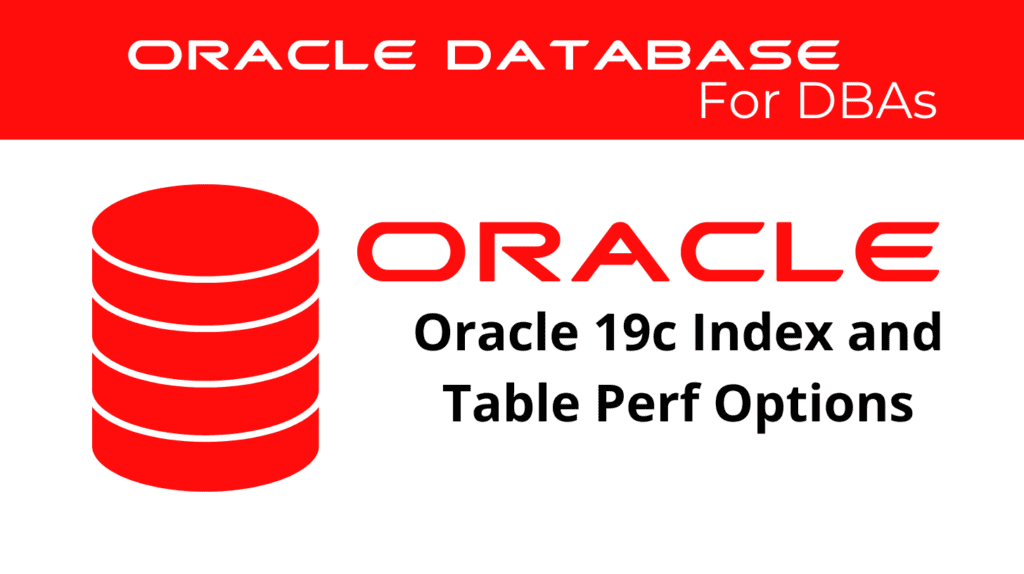
Effective management of database performance is critical for ensuring fast and reliable data retrieval. Oracle 19c offers a range of options for configuring both index and table performance. This blog will explore key techniques for index performance tuning and table performance optimization to help you get the most out of your Oracle database. In Oracle 19c, optimizing the performance of indexes and tables is essential for maintaining efficient database operations. Proper configuration can significantly enhance query execution times and overall database responsiveness. This blog will delve into the best practices for index performance and table optimization, providing practical insights and examples.
Index Performance Tuning
Optimizing index performance involves several strategies aimed at ensuring that indexes are used effectively during query execution. Here are some key techniques:
Index Types and Usage
Choosing the right type of index is crucial for performance. Oracle provides various index types, including B-tree, bitmap, and function-based indexes, each suited for different scenarios. For instance, bitmap indexes are ideal for columns with low cardinality, while B-tree indexes work well for high-cardinality columns.
Regular Index Maintenance
Regularly rebuilding and reorganizing indexes can help maintain their efficiency. Fragmentation and stale statistics can degrade index performance over time. Using the ALTER INDEX ... REBUILD command can defragment indexes, while DBMS_STATS can refresh index statistics.
Index Monitoring
Oracle allows you to monitor index usage with the ALTER INDEX ... MONITORING USAGE command. This helps identify unused indexes that can be removed, thereby reducing overhead and improving performance.
Example Code for Index Rebuild:
ALTER INDEX employees_idx REBUILD;
EXEC DBMS_STATS.GATHER_INDEX_STATS('HR', 'EMPLOYEES_IDX');
Example Code for Index Monitoring:
ALTER INDEX employees_idx MONITORING USAGE;
SELECT * FROM V$OBJECT_USAGE WHERE INDEX_NAME = 'EMPLOYEES_IDX';
Table Performance Optimization
Table performance optimization involves strategies that improve the efficiency of data storage and retrieval. Key techniques include:
Partitioning
Partitioning large tables can significantly enhance performance by allowing queries to scan only relevant partitions instead of the entire table. Oracle supports various partitioning methods, such as range, list, and hash partitioning.
Code for List Partitioning:
CREATE TABLE customers (
customer_id NUMBER,
country VARCHAR2(50)
)
PARTITION BY LIST (country) (
PARTITION usa VALUES ('USA'),
PARTITION canada VALUES ('Canada'),
PARTITION uk VALUES ('UK')
);
Example Code for Hash Partitioning:
CREATE TABLE orders (
order_id NUMBER,
order_date DATE,
customer_id NUMBER
)
PARTITION BY HASH (customer_id) PARTITIONS 4;
Compression
Different from index performance, Using table compression can reduce storage requirements and improve I/O performance. Oracle offers advanced compression options, such as Hybrid Columnar Compression (HCC), which is highly effective for read-heavy workloads.
Example Code for Basic Table Compression:
ALTER TABLE employees COMPRESS FOR OLTP;
Code for Advanced Row Compression:
CREATE TABLE orders (
order_id NUMBER,
order_date DATE,
customer_id NUMBER
) COMPRESS FOR OLTP;
Example Code for Hybrid Columnar Compression:
CREATE TABLE archive_sales (
sale_id NUMBER,
sale_date DATE,
amount NUMBER
) COMPRESS FOR QUERY HIGH;
PCTFREE and PCTUSED Parameters
Adjusting the PCTFREE and PCTUSED parameters can help manage space usage within blocks. Setting these parameters appropriately ensures that there is enough space for row updates, reducing row chaining and migration.
Example Code for Setting PCTFREE and PCTUSED:
ALTER TABLE employees PCTFREE 20 PCTUSED 40;
Techniques for Both Index Performance and Table Optimization
Certain techniques can be applied to both indexes and tables to enhance performance:
Gathering Statistics
Accurate statistics are vital for the optimizer to choose the best execution plans. Regularly gathering statistics using the DBMS_STATS package ensures the optimizer has up-to-date information.
Example Code for Gathering Statistics:
EXEC DBMS_STATS.GATHER_TABLE_STATS('HR', 'EMPLOYEES');
Avoiding Full Table Scans
Where possible, avoid full table scans by ensuring that appropriate indexes are used. Full table scans can be particularly costly for large tables and can degrade performance significantly.
Using Hints
Oracle provides hints that can be used in SQL queries to influence the optimizer’s behavior. Hints like INDEX and FULL can direct the optimizer to use specific index or perform full table scans, respectively.
Example Code for Using Hints:
SELECT /*+ INDEX(employees employees_idx) */ * FROM employees WHERE department_id = 10;
SELECT /*+ FULL(employees) */ * FROM employees WHERE department_id = 10;
Conclusion
Configuring index and table performance options in Oracle 19c is crucial for maintaining an efficient and responsive database environment. By focusing on index performance and table optimization, DBAs can ensure that their databases run smoothly and efficiently. Regular maintenance, appropriate use of indexing, partitioning, and compression, along with accurate statistics gathering, are key to achieving optimal performance.
See more on Oracle’s website!
Be Oracle Performance Management and Tuning Certified Professional, this world is full of opportunities for qualified DBAs!





